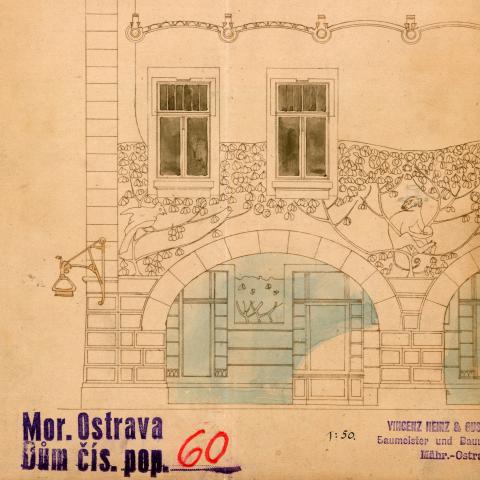Nález kombinovaného parovodního kotle typu Strebel při archeologickém výzkumu tzv. Laubů v Moravské Ostravě

Prozatím největší archeologický výzkum v historickém jádru Moravské Ostravy je spojen se zástavbou proluk po domech čp. 54 až 61 (tzv. Lauby) asanovaných spolu s navazující zástavbou ulice Pivovarské ve 2. polovině 20. století. Po ukončení terénní časti výzkumu realizované v letech 2017 až 2021 probíhá jeho komplexní vyhodnocení, předkládaný příspěvek se ale již nyní zaměřuje na nálezovou situaci z období 19. a 20. Století odkrytou při vytěžení stavební suti ze suterénu domu čp. 60. Tento původně šenkovní dům byl majiteli z rodiny Haberfeldů od konce 19. století postupně adaptován na zábavní podnik, který po roce 1924 nesl název kabaret Alhambra. V rámci poválečných adaptací objektu bylo v přízemí domu v roce 1946 zřízeno ústřední topení vytápěné kotlem umístěným v suterénu. Kotel nebyl při demolici domu po roce 1968 odstraněn a v průběhu počáteční fáze archeologického výzkumu se jej podařilo odkryt a dokumentovat. Jedná se o dvanactičlánkový nízkotlaký parní kotel typu Strebel určený jednak k vytápění parního topeni, a jednak k ohřevu teplé vody. Těleso litinového kotle se zachovalo takřka kompletní, takže mohl byt proveden jeho transfer do depozitáře a zvažováno je jeho restaurování.
Discovery of a St rebel comb ined steam boiler during an archaeological excavation of arcade buildings in Moravská Ostrava
The largest archaeological excavation so far in the historical centre of Moravska Ostrava is connected to development work on empty spaces at buildings no. 54 to 61 (“Lauby”, or arcade buildings) cleaned up along with the follow-up development on Pivovarska street in the second half of the 20th century. Following completion of the field research implemented in 2017 to 2021, its overall evaluation is underway, but the submitted study is already focused on the findings from the period of the 19th and 20th centuries uncovered during the extraction of building rubble from the basement of building no. 60. Originally an inn, this building was progressively adapted from the end of the 19th century by the Haberfeld family to become an entertainment establishment, which took the name Kabaret Alhambra after 1924. During post-war adaptation of the building, central heating was set up on the ground floor of the building, heated using a boiler located in the basement. This boiler was not removed during demolition of the building after 1968, and during the initial phase of the archaeological excavation it was discovered and documented. It is a Strebel model twelve-section low-pressure steam boiler designed both for steam heating systems and for heating hot water. The body of the cast iron boiler has been almost completely preserved, and so it was transferred to a repositury and considerations are being made of its restoration.
